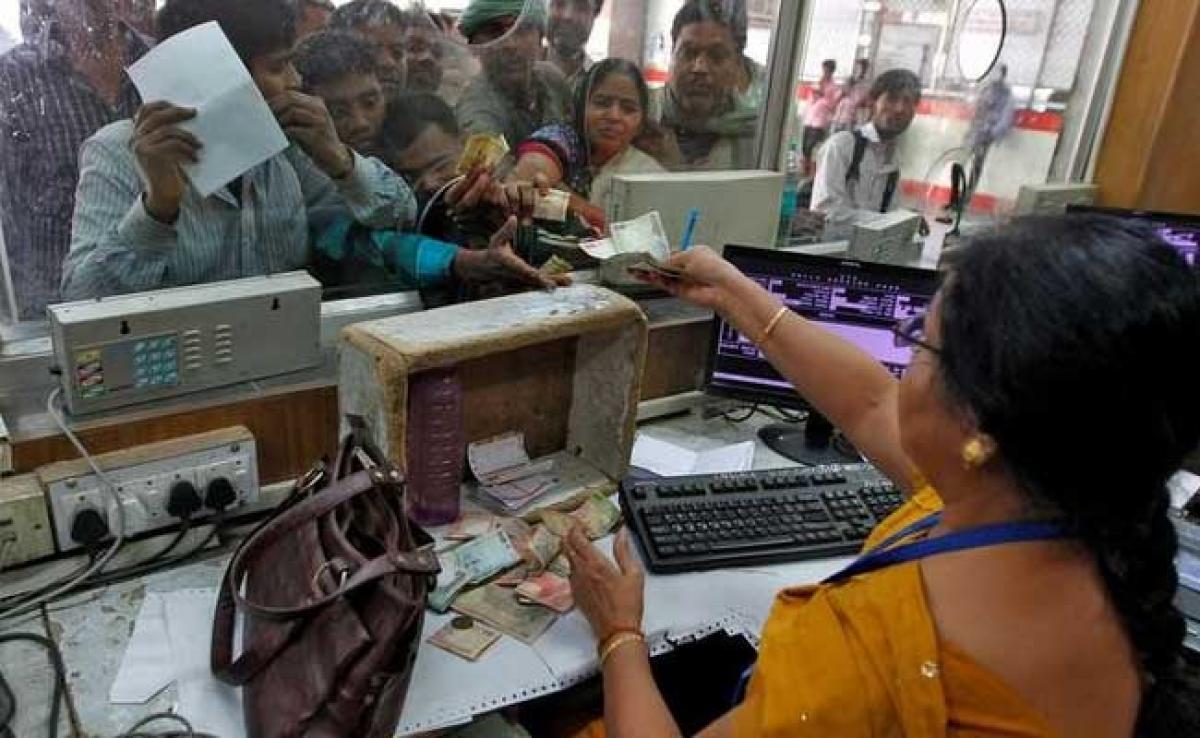Live
- Govt plans to establish offshore Johns Hopkins University Campus in India
- Goa Aces clinch Indian Racing League title
- Study finds how hormone therapy can reshape the skeleton
- High-street fashion players looking at India for manufacturing: Report
- Shreyas Iyer to lead Mumbai as Prithvi Shaw returns for Syed Mushtaq Ali Trophy
- 'Failed to resolve crisis': NPP withdraws support from BJP govt in Manipur
- Chennai: Actress Kasturi Remanded in Custody Until 29th of This Month
- Aaqib Javed likely to become Pakistan's new white-ball head coach
- BJP panel to draft poll charge sheet against AAP govt in Delhi
- Allu Arjun Thanks Fans in Patna, Teases 'Pushpa 2' Release
Just In

Bankers on Saturday said they are betting on the Insolvency and Bankruptcy Code and the process of National Company Law Tribunal for getting quick resolutions in order to solve the problems of bad loans.
Bankers on Saturday said they are betting on the Insolvency and Bankruptcy Code and the process of National Company Law Tribunal for getting quick resolutions in order to solve the problems of bad loans.
"The Insolvency and Bankruptcy Code, 2016 is a game-changer," State Bank of India's Managing Director (National Banking Group), Rajnish Kumar said, adding that it will greatly increase the pace of resolution of stressed assets.
NCLT process is the new one and not matured but it provides a quick mechanism for getting resolutions for the stressed assets, bankers said, adding that the restructuring of bad loans, under the previously floated models, were tried to get rid of the problems but earlier models did not solve many problems.
"With the guideline of earlier restructuring models (S4A, 5/25 and others), the lenders tried their best to solve the bad loans issues. Some of the stressed accounts were addressed but some bigger problems were not solved. The NCLT and IBC is an improved version. The response under the process is so far so good," Bank of India's MD and CEO Dinabandhu Mohapatra said at an event organised by CII here.
His UCO Bank's counterpart Ravi Kishan Takkar also said the banks are looking forward to NCLT process.
"The primary objective for the NCLT process is to get the resolution, not liquidation. Lot things are in place under the NCLT process. In the earlier models, banks could not take sufficient calls. In NCLT, banks can take higher haircuts," he said.
The Reserve Bank of India had identified 12 large accounts with exposure of more than Rs. 5,000 crore and more than 60 per cent of which was recognised as non performing assets (NPAs). Banks have to refer to the IBC for these accounts. The apex bank further identified more stressed accounts for which the insolvency process needs to be initiated.
High NPA ratio had existed earlier, too, Kumar said, adding that the main purpose of NCLT is not liquidation but resolution. Currently, there are 11 NCLT benches across the country and 25,000 insolvency cases were pending. Since the resolutions need to happen in a time-bound manner, the number of benches would have to be increased, he said.
However, the bankers said fresh slippages to bad loans have been slowing up.
"Almost all the bigger stressed accounts are addressed or booked. The banks have covered the problem areas, June quarter results of the bank showed the fresh slippages were not growing. That indicates the bigger (stressed) accounts were booked," Mohapatra said.
Slippages have slowed down but overall NPAs would go up to some extent in the coming quarters, Takkar said, adding that subdued credit off-take was a concern for the industry.

© 2024 Hyderabad Media House Limited/The Hans India. All rights reserved. Powered by hocalwire.com







